What is a living shoreline?
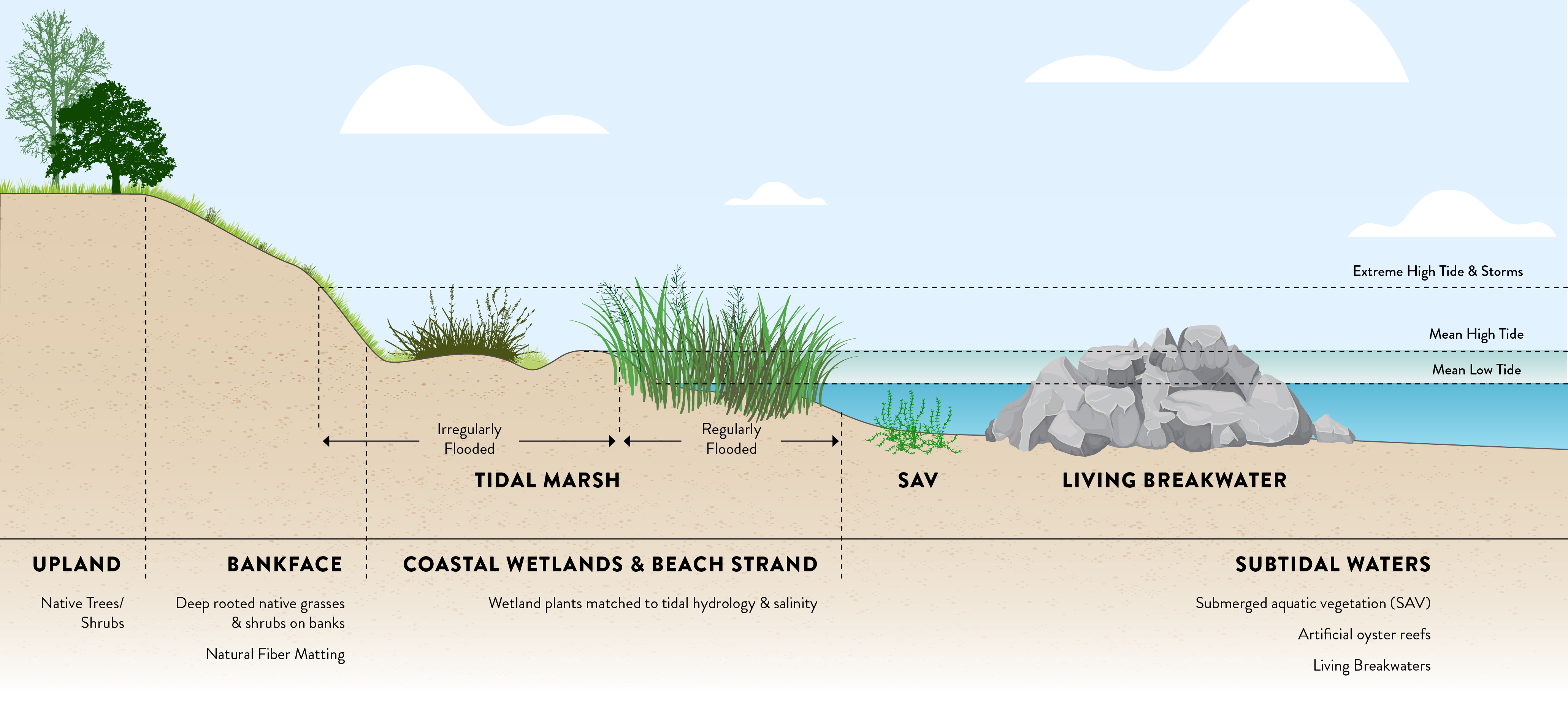
Living shorelines incorporate substantial natural or nature-based features, potentially combined with hard structural components, to provide shoreline protection and stabilization while maintaining ecosystem functions. Living shorelines reduce erosion, protect upland property, create habitat, and enhance resiliency using natural or recycled materials and strategic placement of plants and other organic material. The resulting shorelines look more natural compared to bulkheaded shorelines.
Unlike conventional “hard” shoreline stabilization techniques, living shorelines work with the natural habitat to preserve ecosystem functions. They are also highly sustainable and can provide effective property protection from hurricanes and storm surges. Living shorelines work best in low energy environments, such as bays and estuaries or other areas protected from large waves. The “ideal” living shoreline usually contains several natural components that work together such as:
- Upland native trees and shrubs
- Tidal marsh areas with a mixture of native vegetation
- Breakwaters or other energy reduction structures
- Submerged aquatic vegetation
Which Shoreline Looks Better To You?
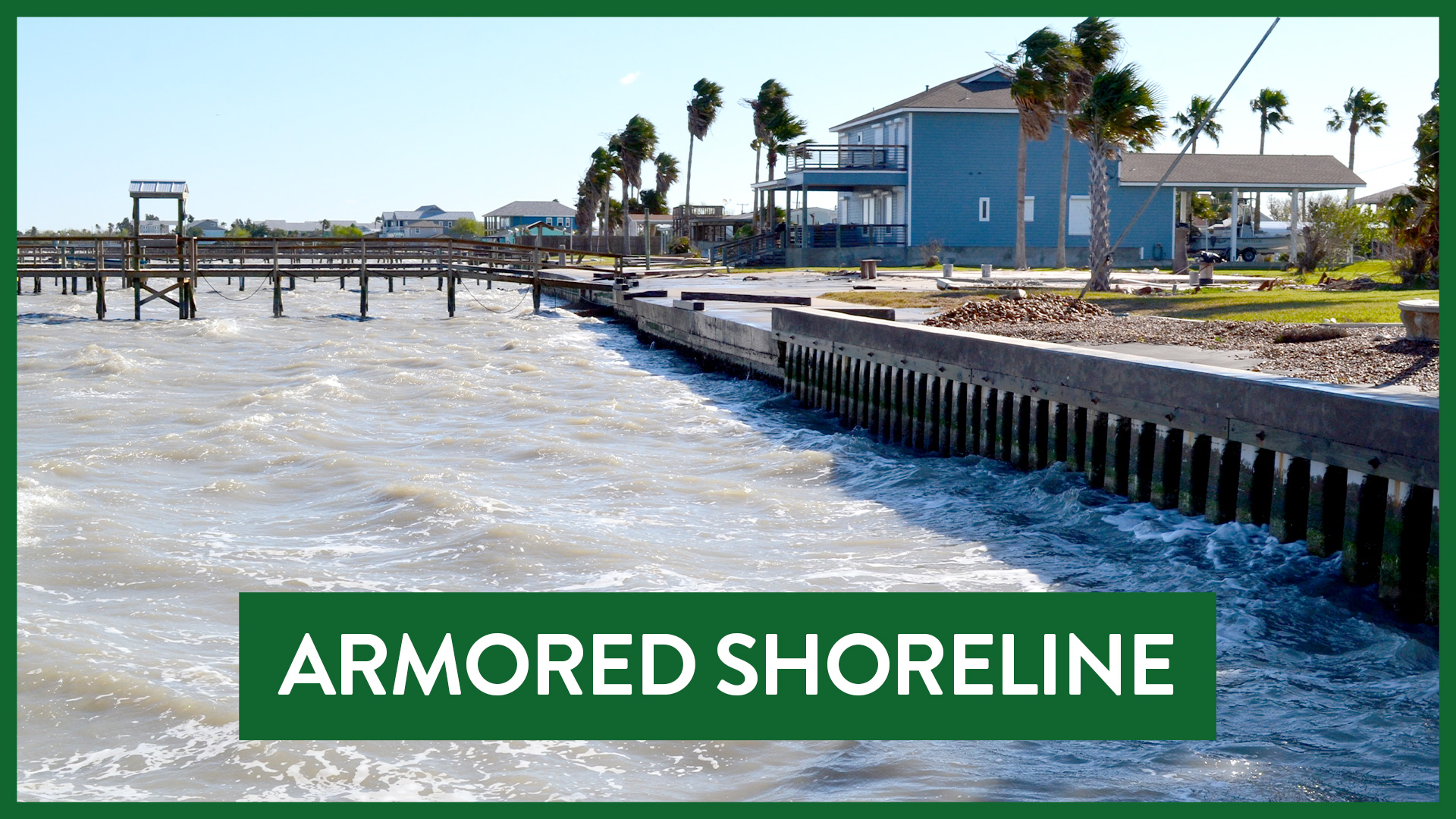
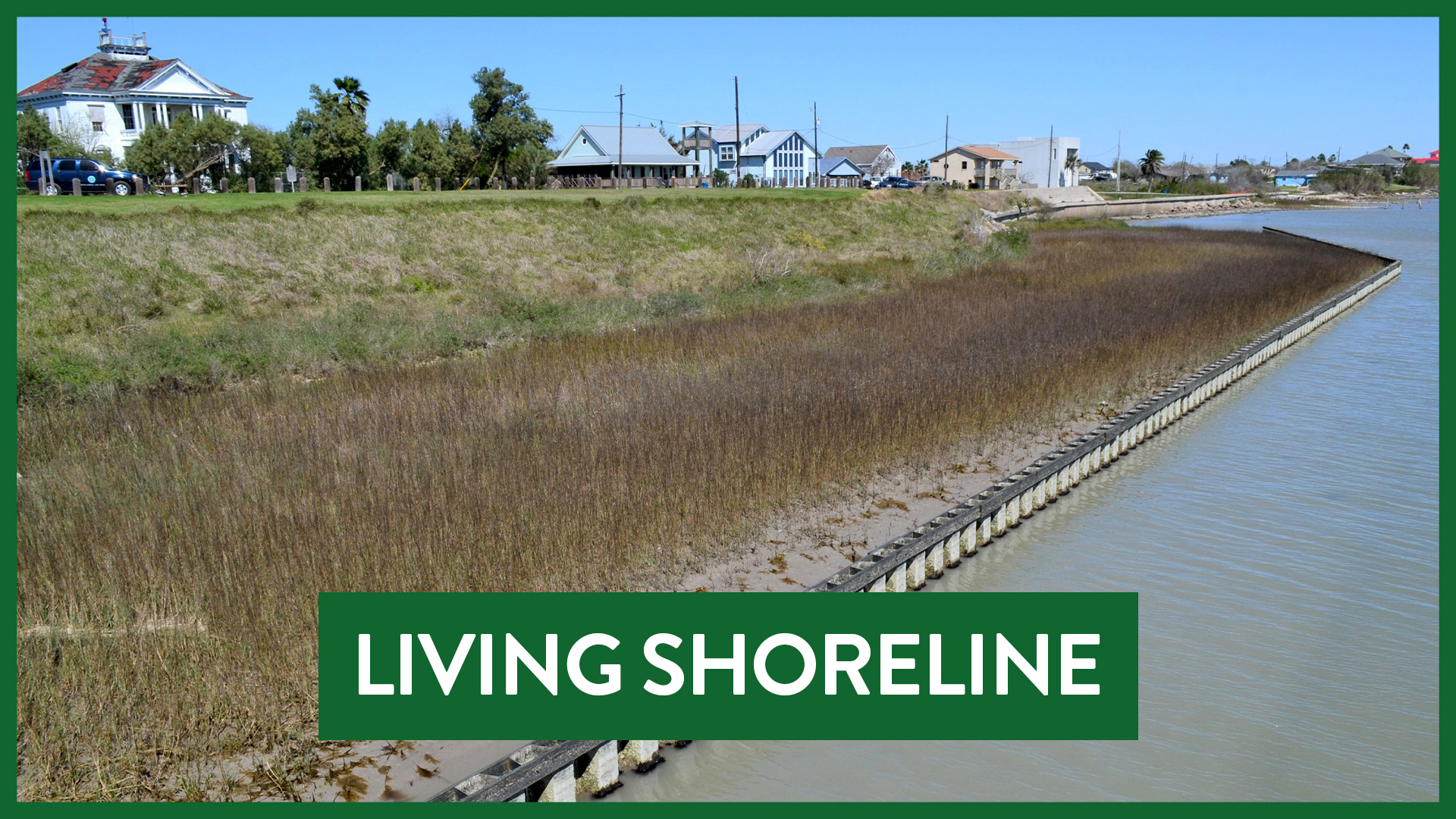
Benefits of Living Shorelines
Property loss is a common concern for many coastal landowners. Unprotected shores are at the mercy of wind, wave, and tidal energy and are vulnerable to storms, floods, and erosion. With a coastline that is eroding at an estimated average rate of 4.1 feet per year, resilient shoreline protection is critical to protecting property interests as well as estuarine ecosystems in Texas.
In contrast to “hard” structures, living shorelines provide a number of benefits that not only limit erosion but also preserve and protect the environment.
A traditional response to erosion in Texas has been the wide-spread use of “hard” shoreline stabilization techniques such as concrete seawalls, bulkheads, and riprap to reduce land loss. However, these engineered structures can have a number of unintended negative effects such as increased erosion on adjacent properties, habitat loss, and structure degradation over time. Moreover, the average hard structure has a lifespan of only 15 to 20 years. They also often have large construction and/or installation price tags with hidden maintenance expenses.
Comparison Of Living Shorelines Versus Hard Structures
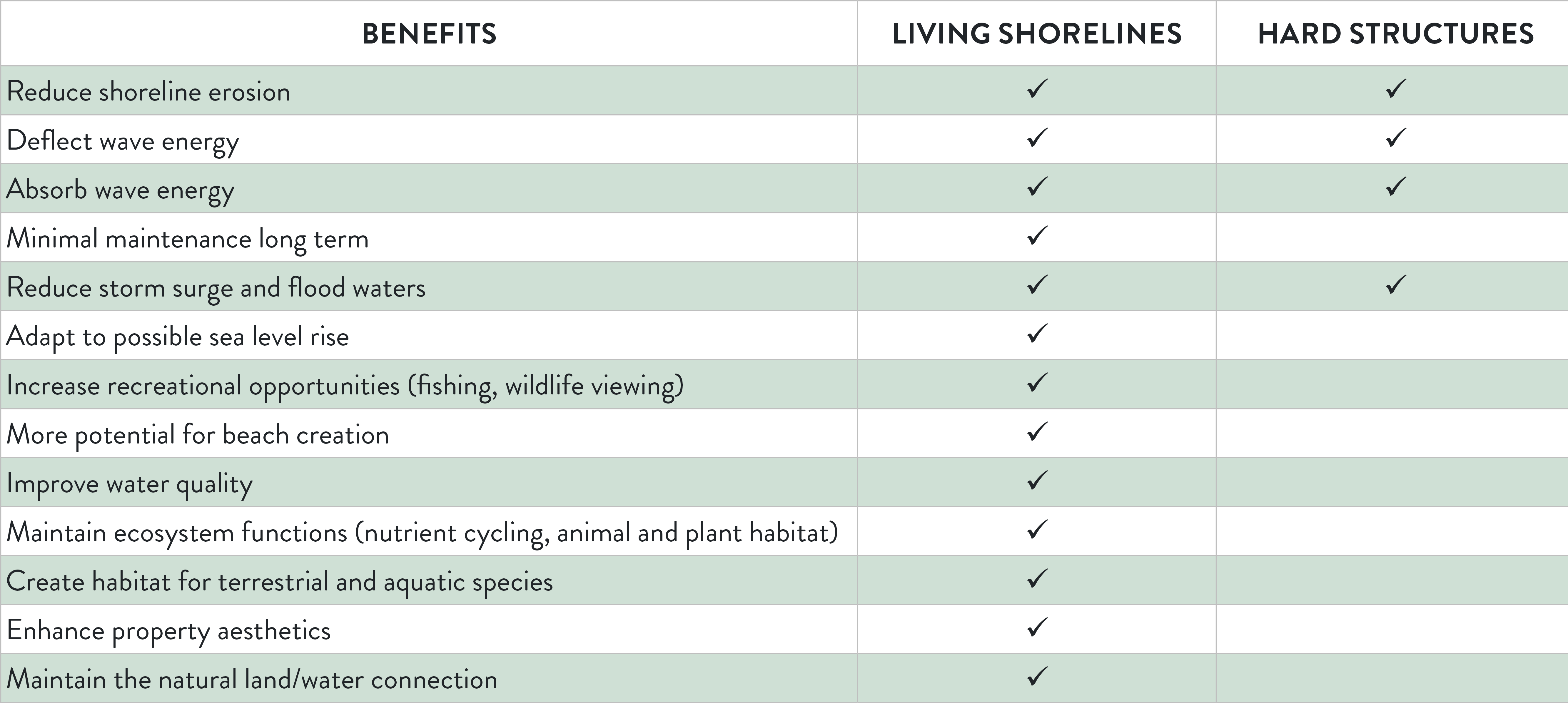
Boxes containing a check mark indicate the method has this characteristic. A blank box means it does not. Note that these are general characteristics and may vary slightly with location.
An Effective, Eco-Friendly Solution
From beaches and coastal dunes to bays, deltas, wetlands, coastal prairies, and oyster reefs, the Texas coast is home to a number of productive and valuable ecosystems that support diverse environmental and economic services. Aside from its natural beauty, our coastline provides jobs, offers food and habitat for marine species, helps temper the effects of hurricanes, and provides recreation and income for anglers, bird watchers, beachgoers, hunters, and tourists alike. With so much of the state relying on the coastal economy, the Texas coast is especially important to protect.
Keep Exploring
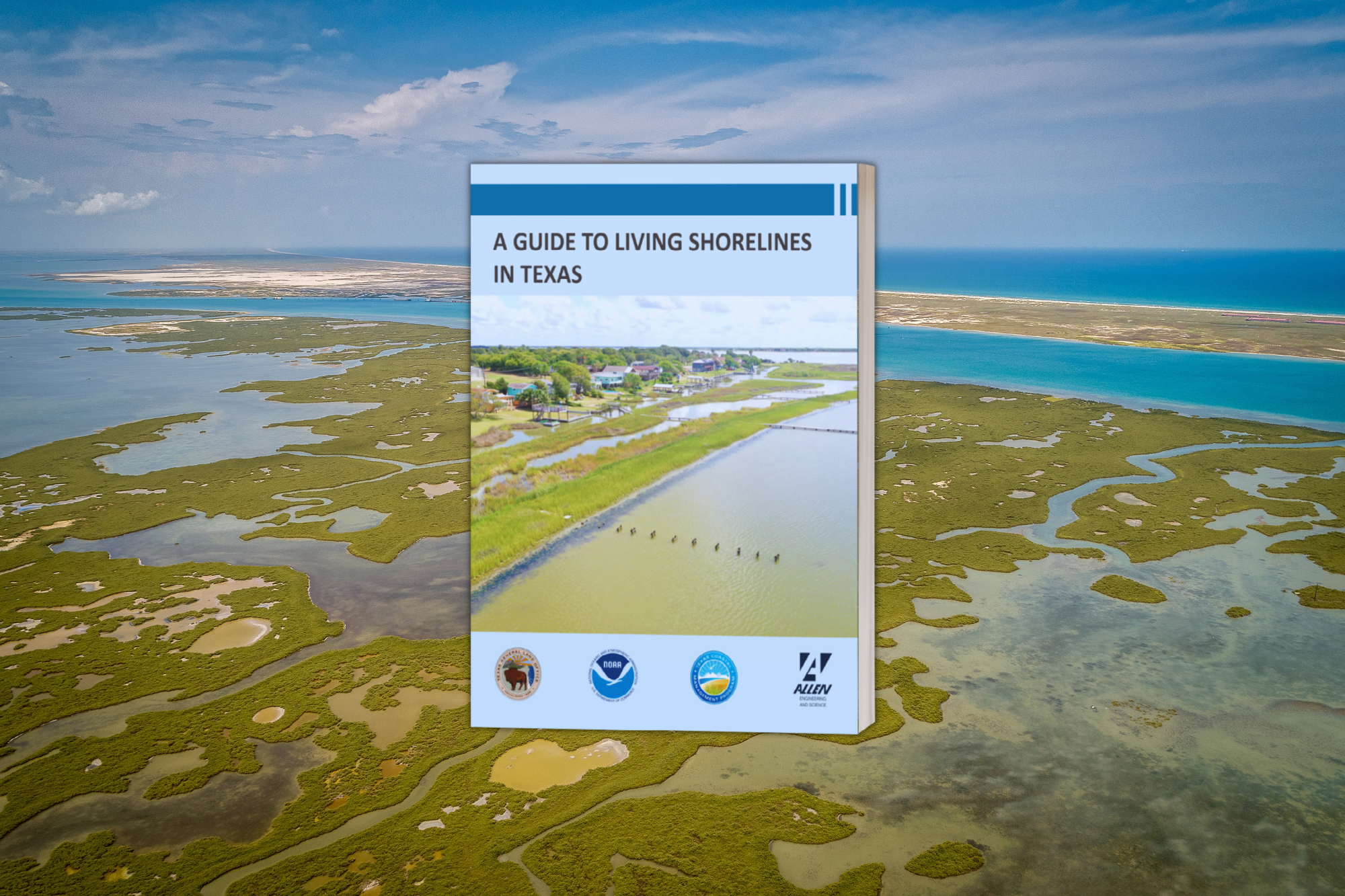
A comprehensive guide to designing, permitting, and implementing a living shoreline project along the Texas coast.
Learn More
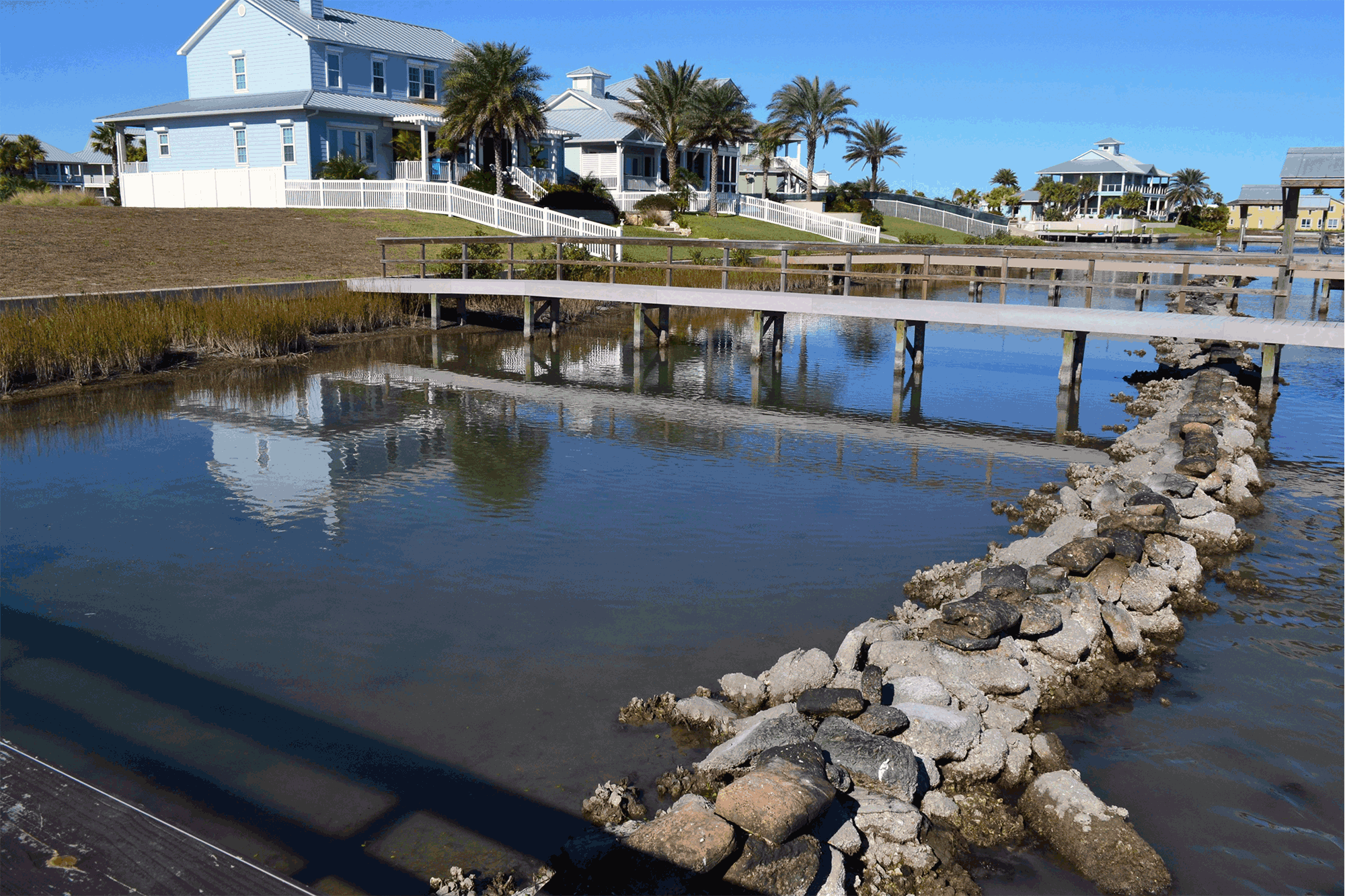
Find the information you need to know for designing, permitting, and constructing a successful living shoreline project that is resilient to coastal hazards and will protect your Texas shoreline for generations to come.
Learn MoreNot sure what a term means? We’ve got you covered! Visit our glossary for an extensive list of commonly used terms in coastal management and living shoreline construction.
Learn More

